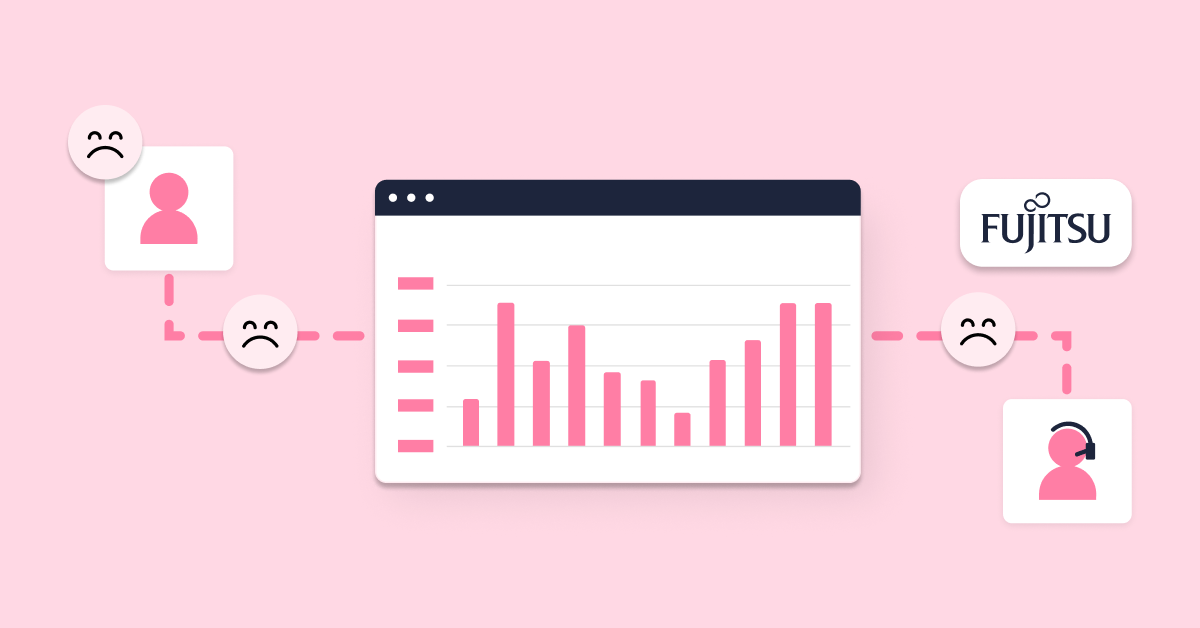MSPs and the Need for Experience Management
Why should end-user experience be important to organizations, including Managed Service Providers (MSPs)?

Your managed service provider (MSP) might be assessing experience level agreements (XLAs) and employee experience management and wondering if and how they are relevant to its operations. It’s understandable because the employees your MSP’s services support are not its employees; they’re its customers’ employees.
This difference for MSPs begs the question of whether it’s customer experience (CX) rather than employee experience that’s relevant. Plus, whether this differentiation matters to the customer end-users that simply need and expect a certain level of experience with the MSP’s services.
End-user experience is important to all organizations, including MSPs
MSPs usually focus on ensuring they’re delivering to agreed service levels. If a service level agreement (SLA) target is turning red, then everyone becomes focused on remedying the issue. However, when an SLA is green, the MSP won’t necessarily look at the metric because the service is assumed to be operating well.
However, just because an SLA target is green doesn’t mean that the customer, or end user, is happy. This happiness disparity might be highlighted via people-centric metrics such as customer satisfaction (CSAT). But it might not, too.
Experience measurement and management allow MSPs to understand what works well and doesn’t, from an end-user perspective, and address any highlighted issues. There’s a better understanding of how end-users feel about the service they’re consuming and the end-user impact of issues, allowing the service provider to place the customer at the center of their service delivery and improvement.
Traditional MSP SLAs have caused service providers to work and think a certain way. However, at some point, the conflict between the service provider and end-user view of performance becomes apparent. Even if little is done to address the issues and root causes.
Traditional MSP mechanisms for identifying issues and improvements have issues
Customer satisfaction questionnaires are a good example. CSAT questionnaires are usually delayed, there’s little response, and the questioning might be divorced from what’s important to end-users. Even so, service providers can still analyze the negative feedback and resolve the highlighted issues.
As with informal feedback, there’s a tendency to listen to those “shouting loudest” and to fix their issues. However, it doesn’t mean others aren’t affected by the issue or other potentially more critical issues.
Hence, understanding an issue’s frequency and the full impact is essential. For example, the impact on customer operations and outcomes is often difficult to see and understand as a third party. It isn’t something that service providers can get from their traditional performance metrics. Instead, it requires end-users to share what’s happening from their perspective.
How experience management changes MSPs
For MSPs to understand what customers’ challenges are, all – and not just some – end-users need the opportunity to provide real-time feedback. Importantly, this needs to focus on what matters to them most.
Capturing experience data in high volumes allows a service provider to understand where and why there’s unhappiness with certain services or products. Experience data might, for example, show that a new or revised process brought in to help the service provider has adversely affected the service and experience from an end-user perspective. Or there’s now a lack of contact. Or the end-user gets asked the same question multiple times. The SLA target might be met, but the end-users’ experiences are poor, and the customer’s employees are unhappy.
Improving MSP operations and customer outcomes with experience data
With a focus on experience, service providers work with their customers. Access to better data helps provide a shared understanding of performance. This insight identifies issues, and the service provider can quickly apply corrective measures. Plus, the affected end-users can see the services they use get better thanks to the changes the MSP applies.
Source: The Global IT Experience Benchmark Report
These improvements don’t stop with a single customer, though – because MSPs deliver services to multiple customers, the learnings and improvements can also be applied to other customers. The issue could be a process causing end-users problems no matter the customer. So, instead of changing it for one customer, it can be changed for all. This means that the improvement won’t just make 100 end-users happier. It will potentially make thousands of end-users happier.
The Fujitsu experience management success story
A longstanding customer, Fujitsu uses HappySignals after having problems with managing the incidents handed over to certain suppliers. End-users were scoring their experiences a -10 average, and they were unhappy. The IT service desk could sense the end-user frustration when they called. The agents handling the calls were also frustrated by the issues.
When Fujitsu analyzed the end-user experience data, it could see where the breakdown was occurring – agents were capturing the minimum data set, and it wasn’t everything needed. This approach resulted in repeat calls and a high reassignment count. There were other issues too. The available knowledge was insufficient, and the agreed process wasn’t being followed. Tickets were inappropriately closed after action was taken, but the real issue remained.
After improvements were made in conjunction with suppliers, the average experience score jumped from -10 to +8. Plus, a ticket handling change improved knowledge availability and increased first-time fix levels.
The improvements didn’t go unnoticed, and the customer now looks forward to their regular user-experience call because they can see the changes Fujitsu is making to improve things.
Feedback – the biggest experience management challenges for MSPs
MSPs need to understand what end-users are thinking and saying. This need makes access to much-needed feedback about the impact of issues and service responses a key challenge. First, getting the responses. Second, gaining a true understanding of how end-users perceive services. Fujitsu needed the data and a tool to provide the data. However, it’s how Fujitsu uses data that really counts.
Fujitsu created specific roles called end-user experience leads. But the key was getting to the true feelings of its end-users – to understand the end-users’ perceptions immediately rather than belatedly hearing some of them at monthly, quarterly, or annual service reviews. Now, rather than assessing individual complaints, where the first question was “Was the SLA delivered against?”, there’s detailed data on how all end-users feel about the services they receive.
Experience management is about more than happy end-users
As a result of experience management, an MSP has a customer with a happy workforce, but the customer is also pleased with the MSP’s services. Especially when they’re visibly improving the services based on end-user feedback.
Experience management also helps to drive culture change within an MSP. For Fujitsu, culture changed rapidly, with everyone putting the end-user at the forefront of conversations – focusing on improving their experiences. The service provider and service receiver also need to trust the experience data. This change can be difficult after spending years working differently and using SLAs.
It’s also likely that SLAs will still have a place – for example, to show how an MSP’s services perform versus their contracted delivery promises.
What do you think about experience management for MSPs? Please tell me in the comments. If you want to learn more about how experience management is helping MSPs, please check out this How Customers and MSPs Benefit from Experience Management whitepaper.
Related content

27.10.2022
6 More Reasons Why the Belief That Employee Experience Doesn’t Matter to MSPs is Flawed
In my previous blog, I challenged eight flawed assumptions or misinformed beliefs that people might have related to ...
Read more >
18.10.2022
8 Reasons Why the Belief That Employee Experience Doesn’t Matter to MSPs is Flawed
For a managed service provider (MSP) doing its best to serve its clients, the topic of employee experience might not ...
Read more >
